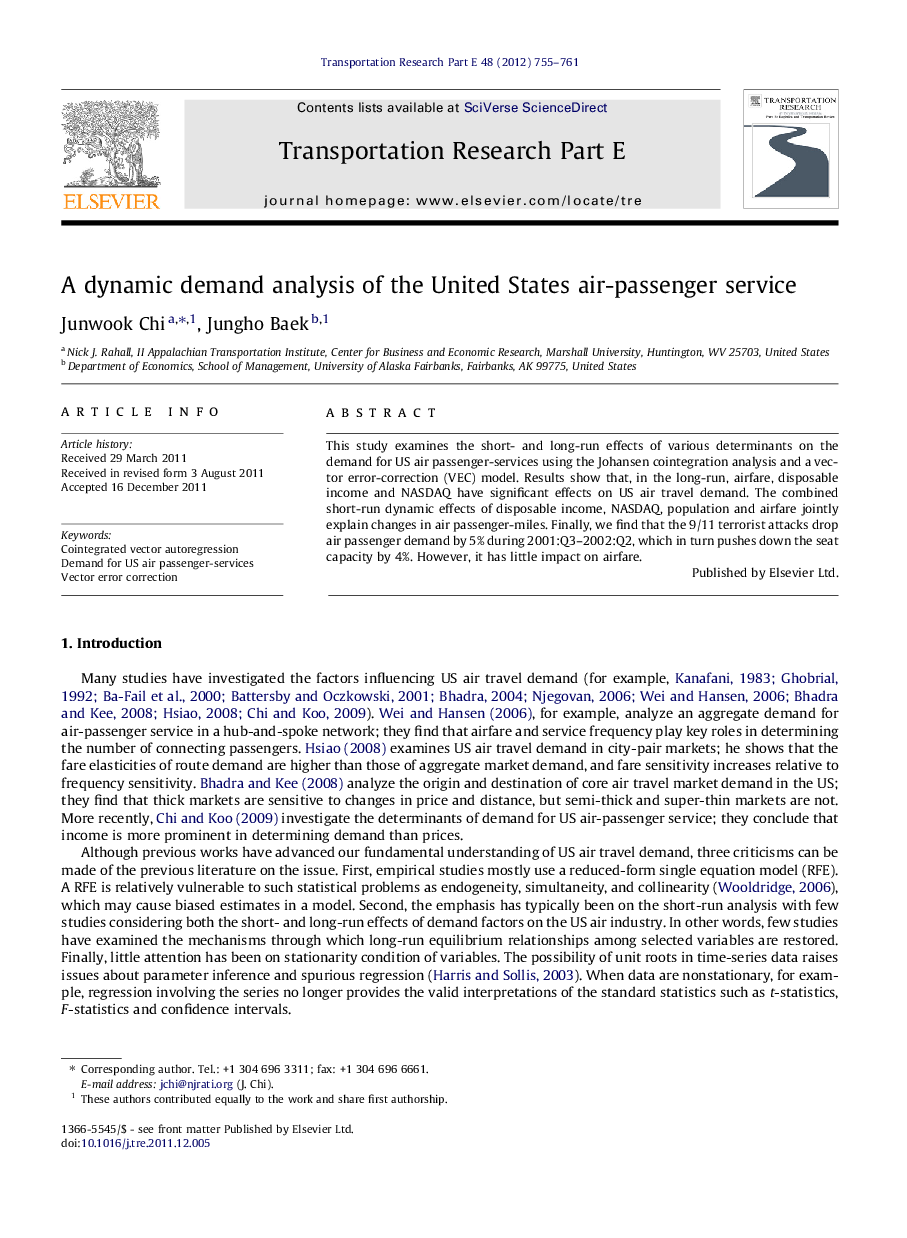| کد مقاله | کد نشریه | سال انتشار | مقاله انگلیسی | نسخه تمام متن |
|---|---|---|---|---|
| 1023589 | 941635 | 2012 | 7 صفحه PDF | دانلود رایگان |

This study examines the short- and long-run effects of various determinants on the demand for US air passenger-services using the Johansen cointegration analysis and a vector error-correction (VEC) model. Results show that, in the long-run, airfare, disposable income and NASDAQ have significant effects on US air travel demand. The combined short-run dynamic effects of disposable income, NASDAQ, population and airfare jointly explain changes in air passenger-miles. Finally, we find that the 9/11 terrorist attacks drop air passenger demand by 5% during 2001:Q3–2002:Q2, which in turn pushes down the seat capacity by 4%. However, it has little impact on airfare.
► We examine the dynamic effects of determinants of the demand for US air services.
► In the long-run, airfare, disposable income and NASDAQ have significant effects.
► In the short-run, income, NASDAQ, population and airfare are jointly significant.
► The 9/11 terrorist attacks drops air travel demand by 5% during 2001:Q3–2002:Q2.
Journal: Transportation Research Part E: Logistics and Transportation Review - Volume 48, Issue 4, July 2012, Pages 755–761